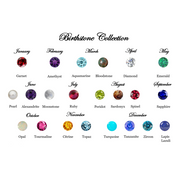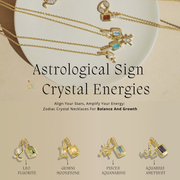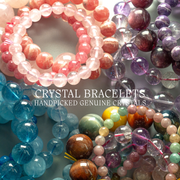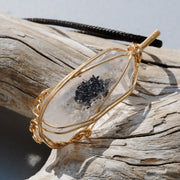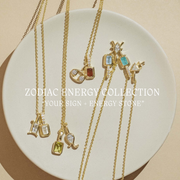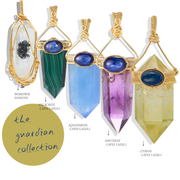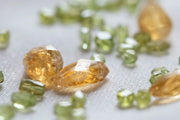Tanzanite History
Discovery and Modern Origins
Tanzanite is one of the most enchanting and rare gemstones in the world, known for its striking blue-violet color and unique origin. Unlike other gemstones that have been known for centuries, Tanzanite was only discovered in 1967 near Mount Kilimanjaro in northern Tanzania. A Maasai tribesman found sparkling blue crystals in the foothills of the mountain, and the gem quickly captured global attention. Tiffany & Co. soon named it “Tanzanite,” after its country of origin, and introduced it to the jewelry market as the gem of the 20th century.

Cultural and Historical Significance
Since its discovery, Tanzanite has been celebrated for its rarity and captivating beauty. The Maasai people of Tanzania traditionally gift Tanzanite to newborn children as a blessing for a prosperous and positive life. Over time, it became a symbol of transformation, representing new beginnings and spiritual growth. Its popularity skyrocketed in the 1970s when Tiffany & Co. featured it in their luxury jewelry collections, describing it as “more dazzling than sapphire and rarer than diamond.”

Symbolic Uses Through Time
Though relatively young in the world of gemstones, Tanzanite’s symbolism runs deep. It has become associated with truth, intuition, and higher consciousness. The gem is often used in meditation and energy healing to connect the mind with the higher realms of awareness. Its shifting blue-to-violet hues are thought to reflect transformation, personal insight, and the harmony between heart and intellect.

Table of contents

Origin
Tanzania (Mererani Hills) – The only known source of natural Tanzanite, producing stones with exceptional clarity and pleochroic color transitions from blue to violet to burgundy.
Kenya – Some trace deposits have been found near the border, though not of gem-grade quality; this underscores Tanzania’s monopoly in Tanzanite mining.
India – While not a natural source, India plays a crucial role in cutting, polishing, and trading Tanzanite for global jewelry markets.
Feature
Chemical Formula: Ca₂Al₃(SiO₄)₃(OH) – a calcium aluminum silicate mineral, part of the zoisite family.
Mohs Hardness: Tanzanite ranks between 6 and 7 on the Mohs hardness scale. It requires careful handling to prevent scratches and is best worn as pendants or earrings rather than daily rings.
Color: Tanzanite exhibits a mesmerizing trichroic effect, showing blue, violet, and reddish hues depending on the crystal orientation and lighting. Heat treatment enhances its vivid blue-violet tones by removing brownish shades from the raw stone.
Symbolism: Tanzanite symbolizes transformation, intuition, and enlightenment. It bridges the gap between heart and mind, helping individuals gain spiritual clarity and emotional understanding.
-
Chakra:
Third Eye Chakra (Ajna): Enhances intuition, insight, and spiritual awareness.
Throat Chakra (Vishuddha): Encourages clear communication and honest self-expression.
-
Zodiac:
Sagittarius
Capricorn
Benefits
Emotional Healing
Tanzanite is a stone of emotional regeneration. It helps dissolve stress, anxiety, and negativity while promoting calmness and self-confidence. By harmonizing the heart and mind, it allows one to process emotions more clearly and find inner peace during challenging times.
Spiritual Growth
Renowned for its connection to higher consciousness, Tanzanite enhances spiritual insight and deep meditation. It stimulates the Third Eye Chakra, helping individuals access intuition and align their spiritual energy with their life purpose. Healers often use Tanzanite to awaken dormant psychic abilities and connect with higher dimensions.
Transformation and Renewal
Tanzanite’s energy is deeply transformative. It encourages personal growth and helps individuals embrace change with courage and grace. For those undergoing major life transitions—such as new careers, relationships, or self-discovery—Tanzanite acts as a guiding light that supports positive transformation.
Communication and Self-Expression
Because of its connection to the Throat Chakra, Tanzanite empowers clear communication and self-expression. It encourages honesty and eloquence, making it a valuable gemstone for public speakers, writers, and artists.
Physical Wellbeing
Some believe Tanzanite supports the immune and detox systems, promotes recovery from stress-related illnesses, and improves skin and hair health. Its calming vibration is said to lower blood pressure and help with sleep by reducing mental overactivity.
Type
Blue Tanzanite
This variety displays a rich sapphire-blue color with subtle violet undertones. Blue Tanzanite is the most prized and valuable, symbolizing wisdom, integrity, and spiritual enlightenment. Its deep hue is achieved through natural or gentle heat treatment that enhances its clarity and brilliance.
Violet Tanzanite
With a predominantly purple or lavender tone, Violet Tanzanite embodies compassion, creativity, and emotional healing. It’s often favored in spiritual jewelry as a representation of divine connection and transformation of the soul.
Green Tanzanite
Extremely rare, Green Tanzanite occurs when vanadium levels differ during crystal formation. Known as “Fancy Tanzanite,” this gem symbolizes growth, balance, and vitality, and it appeals to collectors seeking unusual color variations.
Unheated Tanzanite
Natural, unheated Tanzanite has earthy brownish or yellowish hues. Collectors prize these for their authenticity and natural spectrum, as they represent the gem’s untouched geological essence.
Care & Maintenance
Cleaning
To clean Tanzanite, use lukewarm water, mild soap, and a soft brush or cloth. Avoid ultrasonic or steam cleaners, as the gem is sensitive to sudden temperature changes that may cause cracks.
Storage
Store Tanzanite jewelry in a soft pouch or lined box away from harder gemstones such as sapphires or diamonds. Keep it in a cool, dry environment to prevent scratches and preserve its natural luster.
Handling
Avoid wearing Tanzanite during strenuous activities or exposure to chemicals, perfumes, and heat. Always remove it before exercising or applying skincare products to maintain its brilliance and color stability.
FAQs
Q: Is Tanzanite rarer than diamond?
A: Yes, Tanzanite is about 1,000 times rarer than diamond since it is found only in a small region of Tanzania.
Q: Does Tanzanite fade over time?
A: Tanzanite can lose some vibrancy if exposed to prolonged sunlight or high heat, so it’s best stored away from direct light.
Q: Is Tanzanite a birthstone?
A: Yes, Tanzanite is the modern birthstone for December, symbolizing wisdom, transformation, and spiritual awakening.
Q: Can Tanzanite be worn daily?
A: It’s best reserved for occasional wear since it’s softer than most gemstones; choose pendants or earrings over rings for safety.
Q: What makes Tanzanite’s color so special?
A: Its trichroic nature allows it to display multiple colors—blue, violet, and burgundy—depending on the angle and lighting, giving it an unparalleled visual depth.
Final Thoughts
Tanzanite: Benefits, Properties and Meaning of the Stone reveals why this rare gem is one of the most sought-after treasures in the modern world. Born from the foothills of Mount Kilimanjaro, Tanzanite embodies transformation, spiritual insight, and emotional clarity. Its brilliant interplay of blue and violet hues symbolizes the harmony of intellect and intuition, making it a favorite among healers, collectors, and jewelry enthusiasts alike. Whether worn for beauty, meditation, or metaphysical energy, Tanzanite continues to inspire awe as a gemstone that truly connects the earth and the divine.

